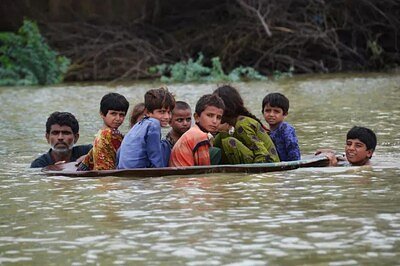
Climate Education Gap: Millions Face Disrupted Learning as Crisis Deepens
As climate change intensifies, millions of children are seeing their education disrupted. Experts urge COP30 to prioritize education as a vital climate resilience tool.
Climate Education Gap: Millions Face Disrupted Learning as Crisis Deepens
By Thomas Moore
As the effects of climate change become increasingly severe, a hidden crisis is unfolding alongside rising temperatures and extreme weather events: a massive disruption to education. A new analysis reveals that over 242 million students experienced learning disruptions in 2024 due to climate-related disasters – a figure experts warn will continue to climb without urgent action. As governments prepare for COP30 in Brazil, advocates are pushing for education to be recognized not just as a casualty of climate change, but as a crucial tool for building resilience and fostering a sustainable future.
A Growing Crisis
Floods, droughts, wildfires, and increasingly intense heatwaves are forcing school closures, displacing families, and creating learning environments that are simply untenable. UNICEF data indicates that heatwaves alone disrupted the education of 118 million students in May 2024. These disruptions aren’t just about missed days of learning; they have lasting impacts on children's academic achievement, mental well-being, and future opportunities.
“The impact goes beyond immediate school closures,” explains a climate education specialist. “Displacement disrupts entire educational pathways, and the trauma associated with these events can significantly hinder a child’s ability to learn.”
While the immediate consequences are felt most acutely in vulnerable regions – particularly in the Global South – the crisis is becoming increasingly widespread, impacting even developed nations. This widening gap is exacerbating existing inequalities and creating a new generation at risk.
Underfunding a Critical Sector
Despite the growing threat, education remains woefully underfunded within global climate finance. An analysis of multilateral climate funds reveals that a mere 2.4% of funding between 2006 and 2023 was allocated to projects directly supporting education – a stark contrast to the billions invested in mitigation technologies and infrastructure.
“We’re prioritizing solutions that address the symptoms of climate change, but not investing enough in building the capacity of communities to adapt and thrive,” says a policy analyst specializing in climate finance. “Education is foundational to both.”
This lack of investment means that schools are often ill-equipped to cope with climate-related disasters. Many lack basic infrastructure like cooling systems, disaster preparedness plans, or the resources to provide psychosocial support to students affected by trauma.
Education as Climate Insurance
However, experts are increasingly recognizing the powerful role education can play in both mitigating and adapting to climate change. Climate literacy – understanding the science of climate change and its impacts – is essential for empowering individuals to make informed decisions and adopt sustainable behaviors.
“Education isn’t just about learning facts; it’s about cultivating critical thinking skills, problem-solving abilities, and a sense of agency,” explains a climate education advocate. “These are the skills needed to navigate a changing world and build a more sustainable future.”
Furthermore, investing in education can boost economic resilience. A skilled workforce is better equipped to transition to a green economy, develop innovative solutions, and rebuild after disasters.
“Investing in education is like buying climate insurance,” says a policy analyst. “It reduces vulnerability, enhances adaptive capacity, and builds long-term resilience.”
COP30: A Critical Opportunity
As governments prepare for COP30, advocates are calling for a significant shift in priorities. They are urging negotiators to integrate education into national climate plans (NDCs) and increase funding for climate-resilient education systems.
“We need to move beyond simply acknowledging the importance of education and start translating that into concrete action,” says a climate education advocate. “That means setting clear targets, allocating sufficient resources, and building partnerships between governments, educators, and civil society.”
Specific recommendations include:
- Integrating climate education into national curricula: Ensuring that all students have the opportunity to learn about climate change and its impacts.
- Investing in climate-resilient school infrastructure: Building schools that can withstand extreme weather events and provide safe learning environments.
- Training teachers to deliver climate education: Equipping educators with the knowledge and skills they need to effectively teach about climate change.
- Providing psychosocial support to students affected by climate-related disasters: Addressing the emotional and mental health needs of students.
- Increasing funding for climate education initiatives: Allocating sufficient resources to support climate education programs and projects.
While the challenges are significant, experts remain optimistic that a more sustainable and equitable future is possible. By recognizing the vital role of education, and investing in climate-resilient education systems, we can empower the next generation to navigate the challenges of climate change and build a brighter future for all.
“This isn’t just about protecting children’s right to education; it’s about safeguarding the future of our planet,” says a climate education advocate. “We need to act now, before it’s too late.”
📝 This article is still being updated
Are you a relevant expert who could contribute your opinion or insights to this article? We'd love to hear from you. We will give you full credit for your contribution.
Contribute Your Expertise →